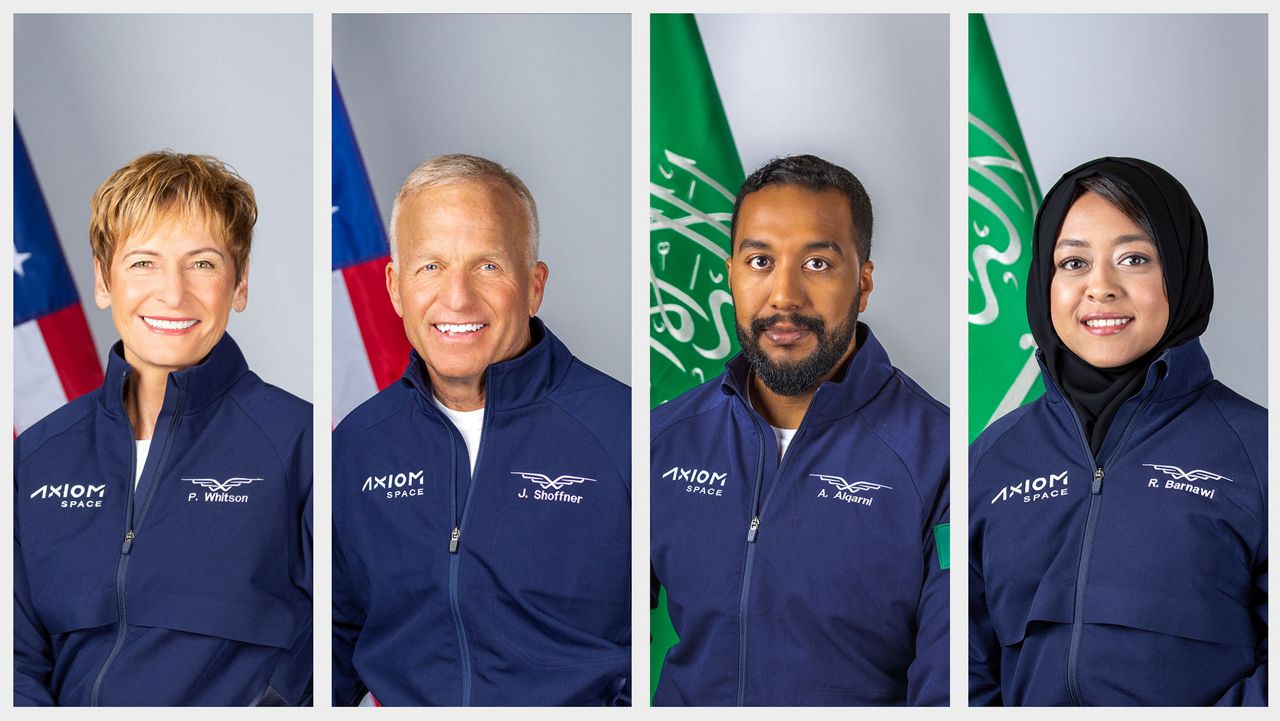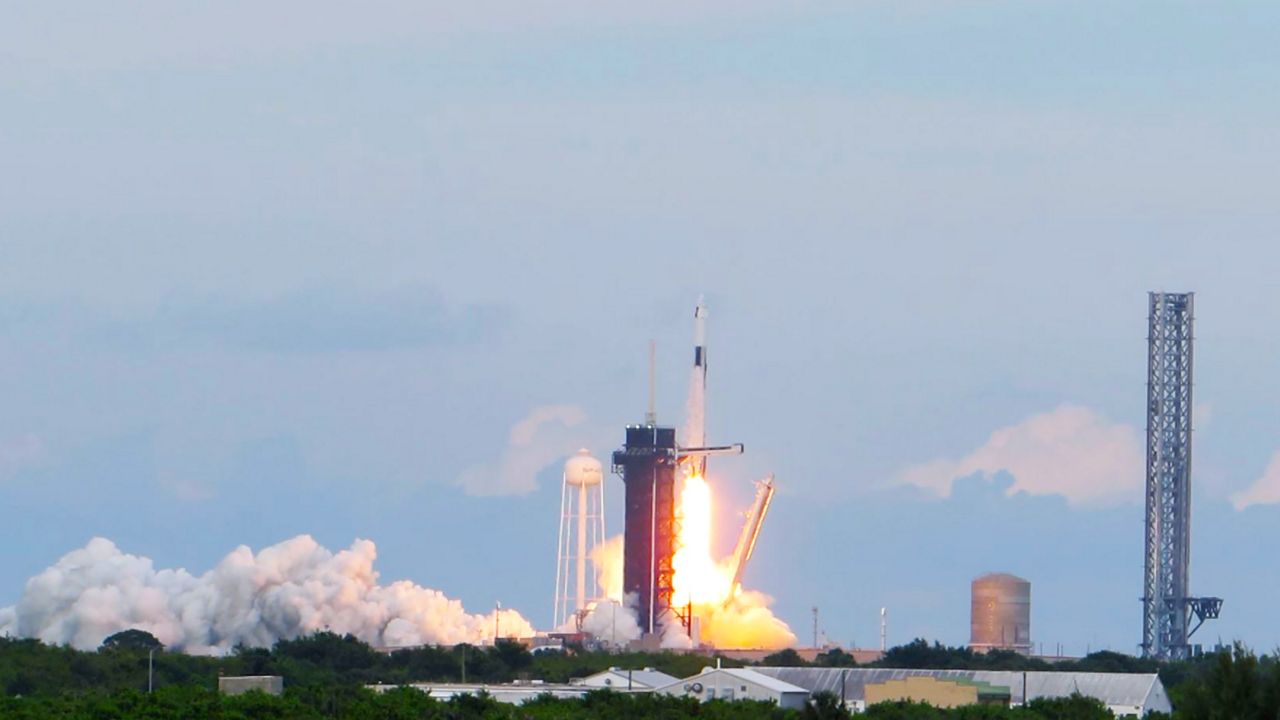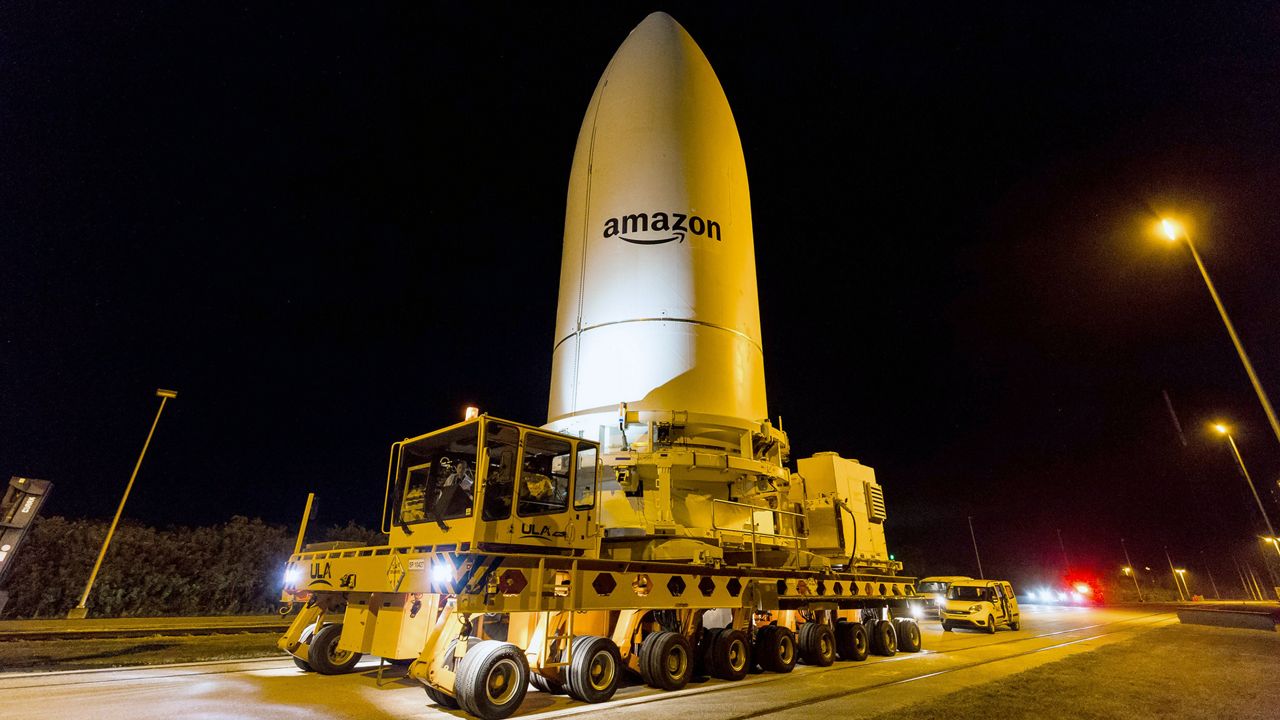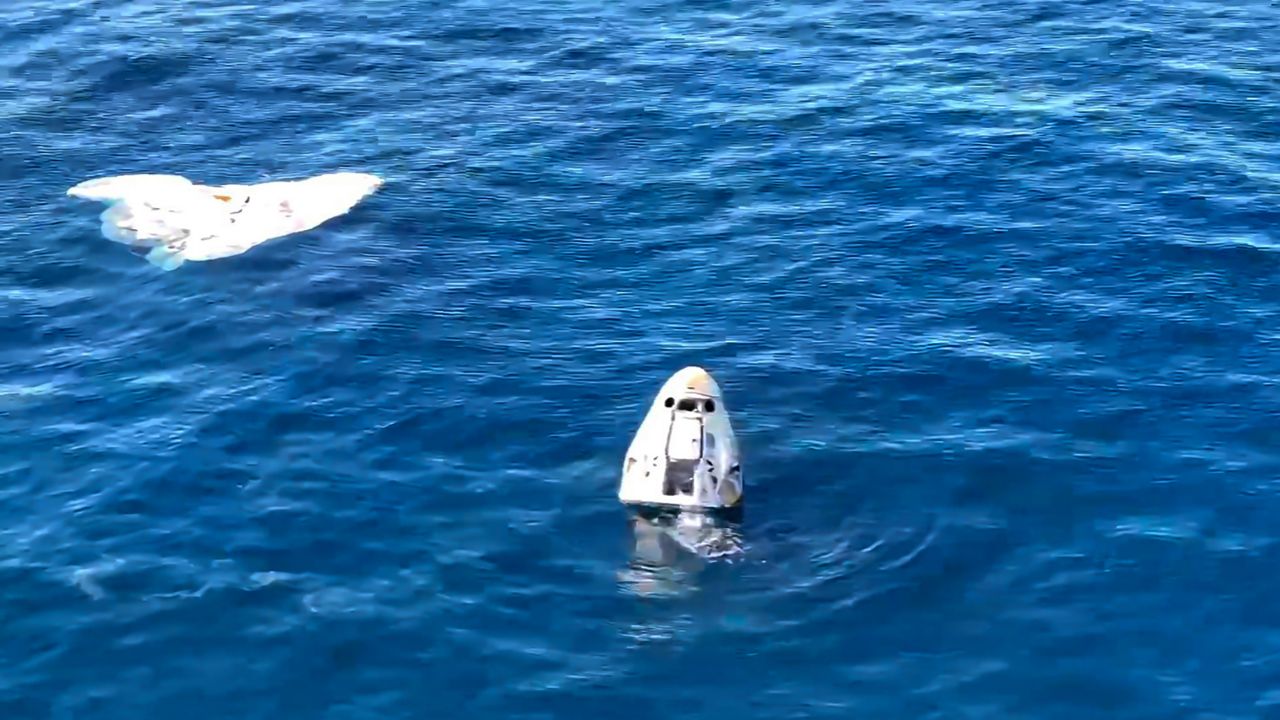KENNEDY SPACE CENTER — Despite a small leak and weather concerns miles away, SpaceX's Falcon 9 rocket sent Axiom Space's Ax-2 crewmembers to the International Space Station.
What You Need To Know
- The Ax-2 crew will conduct more than 20 experiments
- Some of the experiments will have students on Earth participating
- LIVE BLOG: Get the latest updates here
- RELATED coverage: Axiom Space announces Ax-2 mission date
- 🔻Scroll down to watch the launch🔻
#LIFTOFF: @SpaceX’s #Falcon9 #rocket sent @Axiom_Space’s #Ax2 on a journey to the @Space_Station.
— 🚀Anthony Leone🌕 (@AnthonyLeone) May 21, 2023
Here is a shot I took and at the end, you’ll hear the Falcon return in a sonic boom.
Find out more about the mission at @MyNews13 and @BN9: https://t.co/eF3IyPtuz1 pic.twitter.com/ec0RC60ytK
With a roar from the powerful Merlin engines of the Falcon 9 rocket that was heard from miles around and by thousands of spectators, SpaceX’s Dragon carried Commander Peggy Whitson, pilot John Shoffner, and mission specialists Ali AlQarni and Rayyanah Barnawi to the ISS on Sunday evening.
The Falcon 9 and the Dragon space capsule Freedom, which was used for the Crew-4 mission in April 2022, left Launch Complex 39A at NASA’s Kennedy Space Center at 5:37 p.m. ET.
This was the maiden launch of the Falcon 9’s first-stage booster B1080. It landed with a cracking sonic boom at Landing Zone 1.
On Thursday, the 45th Weather Squadron gave a 60% chance of good liftoff weather, but the main concerns are the anvil cloud and cumulus cloud rules. Miles awhile, an anvil cloud made SpaceX observe it, however, it was not an issue.
Learn more about NASA’s weather criteria for the Falcon 9 rocket here.
Just before 4 p.m. ET, SpaceX stated that its engineers detected a "small leak" in the attitude control of the Falcon 9 rocket, however, the issue was resolved 12 minutes before liftoff. If it was going to be an issue, they would have called a hold at T-35 seconds.
Mission Specs:
- SpaceX Falcon 9 rocket: 229.6 feet tall, 12 feet in diameter
- The power: Falcon 9's first stage has nine Merlin engines
- Dragon spacecraft: 26.7 feet, and 13 feet in diameter
- Dragon power: 16 Draco thrusters
- Mission Duration: 10 days
About the mission
The Falcon 9 rocket and its Dragon space capsule will carry Commander Peggy Whitson, pilot John Shoffner, and mission specialists Ali AlQarni and Rayyanah Barnawi to the ISS.
Along with more than 20 experiments, they will go to low-Earth orbit to the famed floating laboratory for 10 days.
The first Ax-1 mission was a first: It was the first all-private human-crewed spaceflight in April 2022.
The Ax-2 mission follows this up with a series of firsts: It is the first private space mission that includes both private individuals (Whitson and Shoffner) and astronauts from a foreign government: Barnawi and AlQarni, said Alexis DeJarnette, Axiom Space’s public affairs officer.
Barnawi is the first Saudi woman astronaut and both she and AlQarni are from the Kingdom of Saudi Arabia, as well as members of the Saudi Astronaut Program, and the first Saudis to go into space, DeJarnette told Spectrum News.
And former NASA astronaut Whitson is the first woman to command a private space mission.
The Ax-2 mission will also help prepare Axiom Space for the future, like its space station the Axiom Station, DeJarnette confirmed.
“The Ax-2 mission is the second of a series of Axiom Space missions to the ISS and a precursor to building the world’s first commercial space station, Axiom Station,” she explained. “Axiom Space’s precursor missions are flushing out/testing procedures, processes, communications, coordination, training, so that when Axiom Station is ready to become independent, the teams in place and the platform they support will be fully operational.”
But before the first section of Axiom Station can get off the ground, in 2025, DeJarnette revealed that the company has already signed with NASA for a third mission, Ax-3, with a targeted launch no earlier than November 2023.
“Axiom Mission 3 is expected to spend 14 days docked to the space station. A specific launch date is dependent on spacecraft traffic to the space station and in-orbit activity planning and constraints,” she explained.
Patrick O’Neill of the @ISS_CASIS told me about the importance of the more than 20 experiments that will be launched along with the #Ax2 crew.
— 🚀Anthony Leone🌕 (@AnthonyLeone) May 21, 2023
Learn more about the mission at @MyNews13 and @BN9: https://t.co/eF3IyPtuz1@Axiom_Space @SpaceX #axiomspace #Falcon9 #SpaceX pic.twitter.com/415GfzZNmU
A Whole Lot of Experiments
The Texas-based Axiom Space is making sure the four astronauts have something to do when they spend 10 days on the ISS. More than 20 experiments will be onboard the Freedom.
“Some of the important research and experiments include initial studies focused on developing future therapeutic applications, studying immune dysfunction in tumor organoid models that can help to predict and prevent cancer, understanding how commercial spaceflight crew members adapt to microgravity, and exploring how weather modification works in low-gravity conditions,” according to DeJarnette.
DeJarnette hosted a presentation in April where officials and some of the principal investigators from various companies and groups that are having their experiments sent up. The presentation highlighted some of the different experiments that will take place.
Some of the experiments will involve looking at blood-based biomarkers to see how short-staying missions will affect them. This will help the eventual space tourist.
Mishaal Ashemimry, the microgravity research lead for the Saudi Space Agency, said during the April presentation that one particular experiment may pave the way for people not having to go on a “critical” training path to be in space like astronauts currently do.
“There will be space tourists and to understand the effects of short-stay missions on the human body regardless of the level of fitness of that person is critical,” she said.

Another experiment will be cloud seeding in microgravity. On Earth, cloud seeding is implanting silver iodide crystals in clouds to make rain, which is used in places that suffer from droughts.
However, for the very first time according to Axiom Space, the Ax-2 will attempt to make it rain in microgravity by mixing moist air with the silver iodide crystals in a reaction chamber to see if water vapor will condense on the crystals to form water droplets.
If successful, this might be the first step in making it rain on the moon or Mars, said Ashemimry.
“This will help inform how we can create artificial rain for lunar and Martian settlements,” she said. This will also be helpful for farming on these celestial bodies.
Another interesting experiment is a suit designed to counter the effects of microgravity. Dava Newman, the director of MIT Media Lab, described the Gravity Loading Countermeasure suit, or skin suit for short, as something worn by astronauts to simulate some of Earth’s gravity and alleviate some of the effects of microgravity, like back pain caused by the spine extending. Something that those in space suffer from.
“… it will assess back pain and spinal elongation, kind of recompress, try to get rid of any back pain,” she said during the same presentation.
During a press conference with all the Ax-2 crew on Tuesday, May 16, Whitson spoke about how some of the other experiments are designed for students back on Earth.
“I’m really personally excited about some of the life sciences and the bioengineering (experiments) in particular but we have a lot of outreach where we’re talking to students. We really want to encourage students to do science, technology, engineering and math. And so, we have a lot of objectives to try and demonstrate things, show young people things …” she said.
In fact, she pointed to Shoffner, who will be hosting a Space Art Contest on the ISS, where students from all over the world will showcase their work.
#Ax2 - expanding access to low-Earth orbit! pic.twitter.com/jXbzITYfOw
— Axiom Space (@Axiom_Space) May 15, 2023
Another mission objective for the Ax-2 crew is the Amateur Radio on the International Space Station (ARISS) program, which is designed for students to connect with the ISS and to foster an interest in technology and engineering.
During the same press conference, AlQarni talked about a space kite that both students on the ground and the Ax-2 crew in space can do.
The two groups will see the “difference or the effect of microgravity on the aerodynamics of the space kite in space and they could compare the results with the ones they have on Earth,” he described.
DeJarnette shared with Spectrum News a complete list of experiments.








